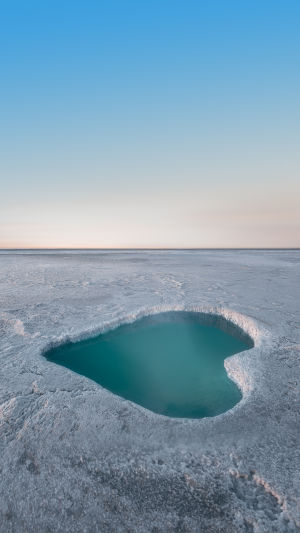Salt lakes are unique bodies of water that contain a high concentration of dissolved salt and other minerals. They can be found in various regions across the world, ranging from hot and arid deserts to frozen tundra.
These lakes have been an essential resource for human civilizations for centuries, providing salt for food preservation and other uses.
Salt lakes are created through a combination of geological and climatic factors. The most common way salt lakes form is through the evaporation of water in closed basins. Closed basins are geological formations where water cannot escape through any outlet, such as a river or stream.
The water entering these basins is usually freshwater, but as the water evaporates, it leaves behind salt and other minerals, making the remaining water increasingly saline.
One of the most well-known examples of a salt lake is the Great Salt Lake in Utah, USA. The Great Salt Lake has formed around 16,000 years ago during the last Ice Age. As the glaciers receded, they left behind a large depression that eventually became filled with water. The lake was once part of a much larger lake called Lake Bonneville, which covered much of Utah, Nevada, and Idaho.
Over time, Lake Bonneville receded and left behind the Great Salt Lake and several other smaller lakes in the region.
Another way salt lakes can form is through the inflow of saltwater from the ocean. This process is called marine inflow and can occur in coastal regions where the land is at a lower elevation than the ocean. As saltwater flows into these low-lying areas, it can become trapped and form a salt lake.
One example of a salt lake that formed through marine inflow is the Dead Sea, located between Jordan. The Dead Sea is one of the saltiest bodies of water on Earth, with a salinity level of around 34%. The high salinity level is due to the lake's location at the lowest point on Earth and its isolation from other bodies of water.
In addition to geological factors, climate plays a significant role in the formation of salt lakes. The majority of salt lakes are found in regions with low rainfall and high evaporation rates. These conditions cause the water in closed basins to evaporate quickly, leaving behind salt and other minerals.
One example of a salt lake formed by climate is Lake Eyre in Australia. Lake Eyre is the largest salt lake in Australia and is located in the country's arid interior. The lake only fills with water during periods of heavy rainfall, and when the water evaporates, it leaves behind salt and other minerals.
Salt lakes have played an important role in human history, providing a vital resource for food preservation and other uses. The ancient Egyptians used salt from the Nile River and salt lakes to preserve food.
Today, salt lakes continue to be an important resource, with many countries producing salt from salt lakes for commercial and industrial use. In addition, salt lakes provide habitats for unique ecosystems and support a variety of wildlife, including birds and fish adapted to the high salinity levels.
Salt lakes are unique geological formations created through a combination of geological and climatic factors. The most common way salt lakes form is through the evaporation of water in closed basins, while others form through marine inflow or climate conditions.
Salt lakes have played an important role in human history, providing a vital resource for food preservation and other uses. Today, salt lakes continue to be an important resource, providing salt for commercial and industrial use and supporting unique ecosystems.





